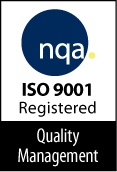Would you like to maximize customer service in a Helpdesk Environment? The following are some tips that are sure to be helpful. Please note that not all of these techniques will work in every organization but are core standards that can be used by most helpdesk personnel.1: Don’t settle for vague descriptions of the issueA lot of time can be lost when users send in vague requests for help rather than through a detailed email or by calling in to the Support line. A technician may have to spend a considerable amount of time on the phone with the end user before getting to the core reason for the call. Today, vague requests for help can be avoided. Windows 7 and 8 include a utility called Problem Steps Recorder that allows users to record the steps that resulted in the problem and to be able to send the file to the Support Department. This allows the help desk staff to see the exact error message the user is receiving, as well as what the user did that caused the error to occur. Insisting that these types of recorded steps be attached to help desk requests can save technicians time. This in turn will help in resolving the issue much faster which means less downtime for the Customer. Screen shots can be very helpful in problem solving because they can show the exact error message that the customer is seeing.2: Take advantage of remote capabilitiesIn the past, remote capabilities were in their infancy and the help desk staff had no choice but to visit each user in person. Now, any travel time can be avoided by establishing a remote session to the user’s computer. There are many products out there to choose from such as LogMeIn as well as WebEx, just to name a few. One can always use the built in remote desktop functionality of Windows 7 or Windows 8, but those must be enabled. There are always going to be some cases that require technicians to physically interact with a computer (such as a computer with a bad power supply), but this should be the exception rather than the norm. By utilizing remote capabilities the majority of the time the call can be cut in half thus saving time for both the technician as well as the customer.3: Set a reasonable time limit for a callSome software/hardware issues are easy to fix, but others take time, sometimes a lot of time. A common policy many helpdesks have is a defined reasonable time limit spent on the phone with the customer to diagnose and repair a Software/Hardware problem. If the problem cannot be fixed within that timeframe, the technician has to wipe the hard disk and reload Windows (assuming that the problem was software related and not hardware related). This allows the help desk to handle a greater amount of calls in any given day and be able to provide faster service to the customer.4: Track user case historyHelpdesk tracking software can be used to track the company’s/user’s call history. Although information might be compiled on a per user basis, most helpdesk tracking software will also let you view service history on a per company basis.If the help desk personnel receives a call from someone they aren’t familiar with, a quick look at the user’s track record might save time on the issue. It is common to have users routinely call about the same problem over and over again. Having access to such information up front can be a time saver as the previous tickets will show what was done and how the issue was resolved. By sending the resolution to the user after the call, this results in the user not calling back since they have a hard copy of the steps that resolved their issue in the previous case. This, in turn, will save the customer time by not having to make another phone call in to support. Based on the information gathered around the help desk customer service offerings, this list should provide what a user should expect when calling into a help desk for support services.

